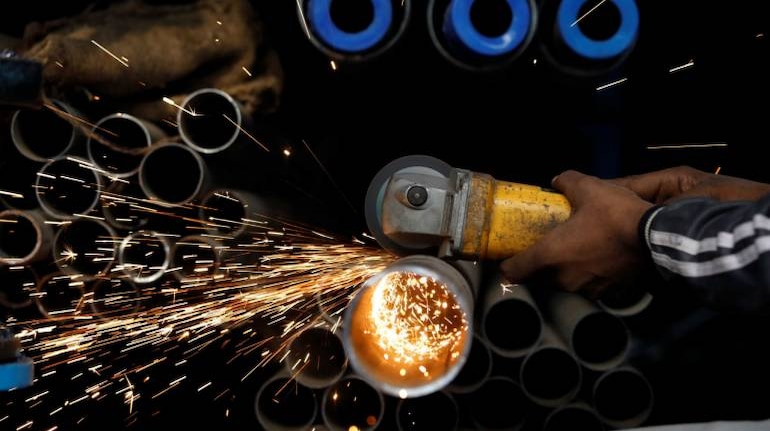Fitch Ratings too on September 8 projected a massive 10.5 percent contraction of India's GDP in the current financial year.
Gross domestic product (GDP) growth forecast for FY 2020-21 was revised further downward to a contraction of 11.8 percent from the earlier contraction of 5.3 percent by India Ratings and Research (Ind-Ra), the Indian arm of Fitch Ratings.
Fitch Ratings too on September 8 projected a massive 10.5 percent contraction of India's economy in the current financial year. Fitch had earlier projected India's GDP to contract by 5 percent this fiscal.
"The negative 23.9 percent growth in 1QFY21 is the first contraction in quarterly GDP data series... The economic loss in FY21 is estimated to be Rs 18.44 lakh crore. However, GDP is expected to rebound and grow at 9.9 percent year-on-year (yoy) in FY22 mainly due to the weak base of FY21," Ind-Ra said is its forecast.
The outlook said that while earlier, Ind-Ra had expected GDP in the fourth quarter of FY21 to almost reach the level attained in the same period a year ago, the estimates show that now the GDP in real terms (constant prices) will surpass the fourth quarter FY20 level only in the fourth quarter of FY22 and in nominal terms (current prices) in third quarter of FY22.
All indicators, be it mobility or consumption, point towards a much weaker economic recovery. Out of 35 states/union territories (UTs), workplace mobility improved only in 16 states/UTs between end-May and end-August 2020.
As the number of COVID -19 infections picked up significantly across India in July, leading to local/regional lockdowns, mobility in many states/UTs reduced by end-August from end-June.
"Ind-Ra believes the work place mobility would remain low even in the next few months and would not return to normal till a vaccine is found," the report said.
According to the outlook, while a second wave of infections is being witnessed globally, India has not been able to flatten the first wave of infection curve. On 6 September 2020, India added 91,723, the maximum single day infections, in the world.
According to the outlook, industry is expected to contract by 24.2 percent in FY 21 while services would contract by 9.9 percent in the same year. The only bright spot is agriculture, expected to grow at 3.5 percent in FY 21.
"After several years, this (agriculture) sector has witnessed three consecutive good harvests – Rabi 2019, Kharif 2019 and Rabi 2020 and in all likelihood would witness the fourth one as well – Kharif 2020. As per the latest data available, the actual rainfall during 1 June – 2 September 2020 for the country as a whole has been 9 percent above normal and the total area sown under kharif crops as on 4 September 2020 has been 109.5 million hectare, up 6.3 percent yoy," the report said.
The economic disruption caused by COVID-19 has had a telling impact, not only on the economy but also on jobs and livelihoods. However, it has been more pronounced in the unorganised sector, leading to huge reverse migration. Although there is some evidence of migrant workers returning to urban areas, the process is likely to be slow.
"Private final consumption expenditure growth therefore is now estimated to clock negative 12.8 percent, down from the earlier estimate of negative 5.1 percent. Ind-Ra expects essentials (pharma, healthcare and telecom) to recover first and reach the 1QFY20 level," the report said.
This is expected to happen in second quarter of FY21, followed by non-discretionary consumer goods and infrastructure sector (chemicals, oil & gas, IT, sugar and agri-commodities) in third quarter of FY21 and industrial goods and cyclical sectors (power, iron & steel, logistics, cement, construction, automobiles and automobile ancillaries) in fourth quarter of FY21.
Discretionary consumer goods sectors such as airlines, hotels, airport, real estate and construction are unlikely to witness enough traction in FY21 and will start recovering only in first quarter of FY22.
"The gross fixed capital formation are now estimated to grow at negative 27.3 percent in FY21 compared to our earlier estimate of negative 17.6 percent. Ind-Ra believes factors such as a) excess capacity, b) weak domestic/global demand, c) stretched/leveraged balance sheet of Indian corporates and, d) budget constraints will now push the investment demand revival beyond FY22," the report said.








